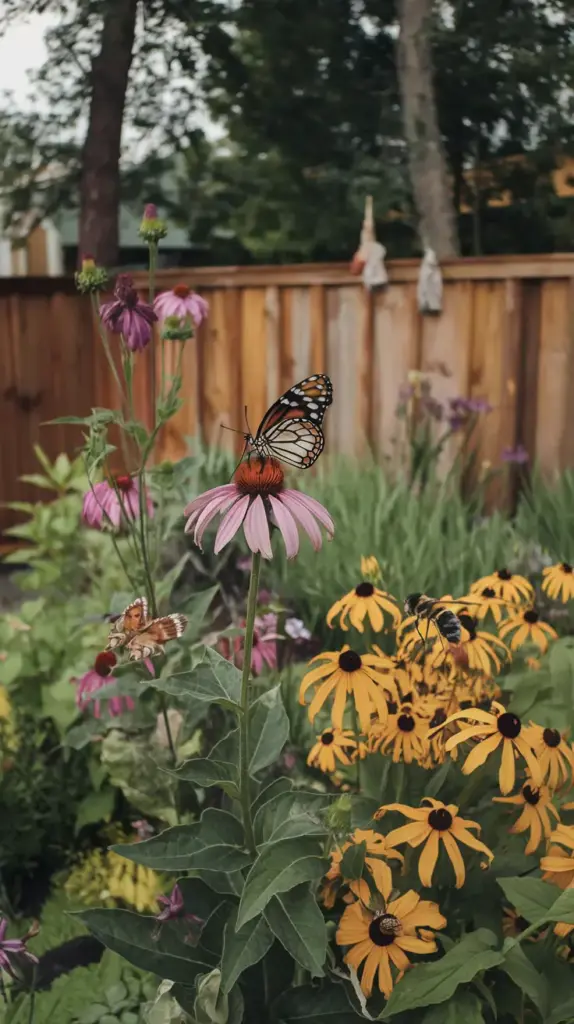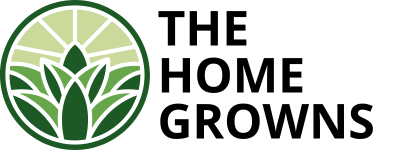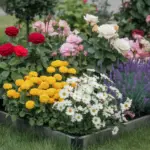4. Creating a Butterfly and Bee Haven: Your Guide to a Pollinator Paradise

Let me tell you something amazing – when I first started my pollinator garden journey, I had no idea it would become my favorite outdoor hobby! After years of trial and error (and yes, some epic fails), I’ve learned exactly what makes these beautiful creatures tick. Let me share my tried-and-true approach to creating a buzzing paradise in your small garden.
Choosing the Perfect Pollinator-Friendly Flowers
I’ll never forget planting my first butterfly bush only to discover it wasn’t native to my area! While it did attract some pollinators, I quickly learned that native plants are absolute superstars when it comes to supporting local wildlife. Some of my top performers include purple coneflower, black-eyed susans, and native salvia.
The secret sauce? Plant in clusters! I’ve found that grouping at least three of the same plants together creates an irresistible landing pad for our winged friends. And here’s a pro tip: stagger your blooming seasons so there’s always something flowering in your garden.
Setting Up Feeding Stations That Work
Creating feeding stations isn’t just about planting flowers. I learned this the hard way when my garden was looking gorgeous but still wasn’t attracting many visitors. Here’s what made the difference:
- Install a shallow water source with landing spots (I use flat stones in a shallow dish)
- Create puddling stations for butterflies (mix sand and water in a sunny spot)
- Leave some bare soil patches for native bees
- Add flat rocks in sunny spots for basking butterflies
Native Plants: The Real MVPs
Listen, I used to think any flowering plant would do the trick. Boy, was I wrong! Native plants are like a five-star restaurant for local pollinators. They’ve evolved together over thousands of years, creating perfect partnerships. Some of my favorite native additions include:
- Milkweed (absolute must for monarchs!)
- Goldenrod (late-season superhero)
- Wild bergamot (bees go crazy for this one)
Smart Layout Strategies
The layout of your pollinator garden matters more than you might think. I’ve found that creating what I call “pollinator highways” works wonders. This means designing clear paths between flowering plants that allow insects to move easily through your garden.
Remember to include plants of varying heights – I like to think of it as creating a pollinator apartment complex! From ground covers to tall stalks, giving pollinators different levels to explore has dramatically increased the diversity in my garden.
Sustainable Practices That Make a Difference
The biggest game-changer in my pollinator garden? Going chemical-free. I know it can be tempting to reach for that pesticide when you see a few holes in your leaves, but those “imperfect” plants are actually signs of a healthy ecosystem. Instead, I focus on:
- Companion planting for natural pest control
- Using organic mulch to retain moisture
- Leaving fall cleanup until spring to protect overwintering insects
- Creating brush piles for beneficial insects
Ready to discover another exciting way to maximize your small garden space? Our next section explores the zen-like beauty of Japanese-inspired pocket gardens. Click “next” to learn how to create a peaceful, minimalist retreat that proves less really can be more! You won’t want to miss these space-saving techniques that combine functionality with stunning aesthetic appeal.









GIPHY App Key not set. Please check settings